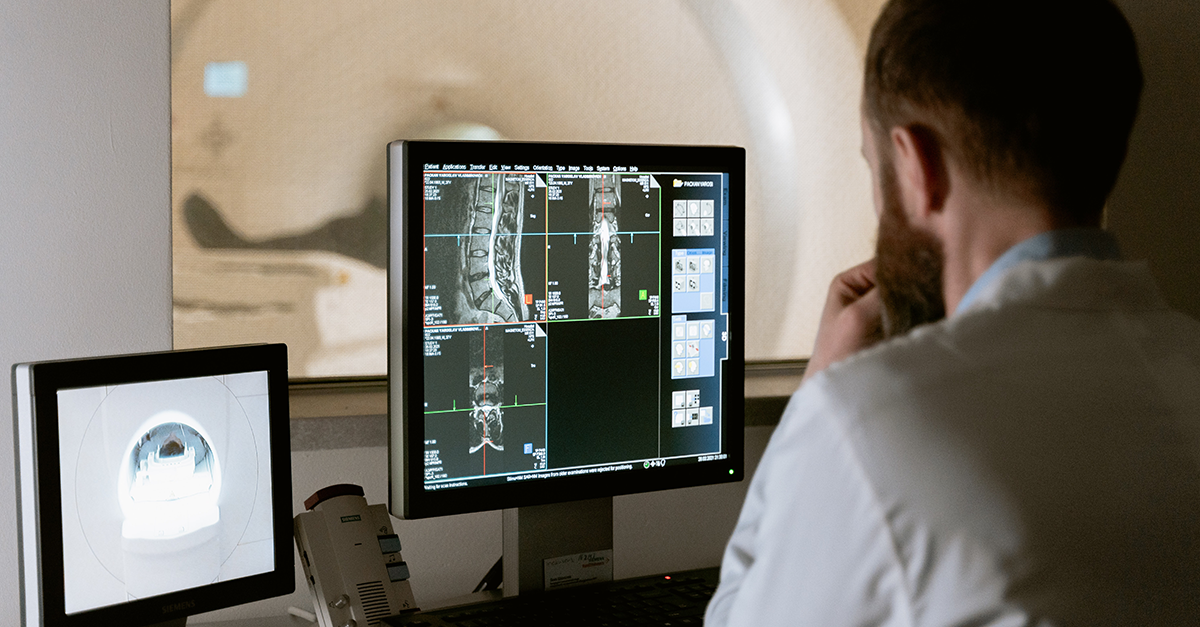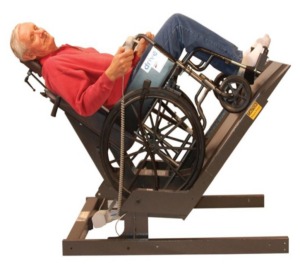

Blog
How can building designers and healthcare providers proactively ensure that medical diagnostic equipment is accessible to patients with disabilities?

Medical diagnostic equipment is instrumental to the accurate and timely diagnosis of a patient’s health conditions, but people with disabilities are often met with challenges when accessing and using diagnostic equipment. This can lead to omitted examinations or inaccurate results, thus causing greater health disparities among people with disabilities.
The Americans with Disabilities Act (ADA) and the 2010 ADA Standards for Accessible Design have made a significant impact on how architects and designers consider accessibility in healthcare settings.
Under Title III of the ADA regulations 28 CFR Part 36, hospitals are required to provide full and equal access to healthcare services and reasonable modifications of policies, practices, and procedures, as well as auxiliary aids and services. As part of this requirement, hospitals must provide accessible medical diagnostic equipment.
However, the 2010 ADA Standards do not provide technical guidance on what types of medical diagnostic equipment and how many of each type must be accessible to patients with disabilities. Because of this, the determination is often left up to the terms of settlement agreements.
How can designers and healthcare providers proactively ensure that medical diagnostic equipment is accessible to patients with disabilities? Keep reading for our recommendations.
“Trends in Healthcare” is a recurring series that focuses on exciting new designs and technologies we’re seeing in healthcare projects and provides best practices on how to ensure that these latest trends are accessible to persons with disabilities. We build on the wealth of knowledge we gain from working with healthcare design teams, construction crews, and practitioners to provide practical solutions for achieving accessible healthcare environments.
This blog post was first published on July 7, 2023. It was updated on October 25, 2024 to include new developments (see bottom of post).
In 2010, the Patient Protection and Affordable Care Act amended Title V of the Rehabilitation Act of 1973 to add Section 510, “Establishment of Standards for Medical Diagnostic Equipment.” This charged the Access Board—the federal entity that establishes and provides guidance on the design standards—in consultation with the Food and Drug Administration (FDA), to develop accessibility standards that contain minimum technical criteria for medical diagnostic equipment so that it is accessible to and usable by individuals with disabilities.
The goal of the standards is to allow independent entry to, use of, and exit from the equipment by patients with disabilities to the maximum extent possible.
From 2012 to 2017, the Access Board and the FDA released proposed standards for public comment; formed an Advisory Committee consisting of people within disability groups, equipment manufacturers, and healthcare providers for further research and development; and released the final Accessibility Standards for Medical Diagnostic Equipment (MDE Standards).
The final standards consider how medical diagnostic equipment is typically designed to support patients in certain positions (supine, prone, side-lying, or seated position) for accurate diagnosis; thus, the technical criteria are organized by the patient positions the equipment is designed to access and support.
Concerns were raised about whether certain types of equipment could meet the minimum transfer height of 17 inches AFF, and a 5-year Sunset Provision was established for further research.
Since the publication of the MDE Standards, the Access Board commissioned a statistical analysis of occupied seat heights for manual and powered wheelchair users. In addition, as of the publication of this blog post, the board is seeking public comment until July 24, 2023 for information on costs of compliance, time needed to comply, other research studies, and any other resources, data, or information the Access Board should consider regarding its proposed minimum low transfer surface height requirement of 17 inches AFF.
The MDE Standards were finalized in the Federal Registrar on January 9, 2017 and went into effect February 8, 2017. Although they have been developed for over six years, no administrative authority has adopted the standards and provided scoping criteria for enforcement.
In 2013, the Department of Justice issued an Advance Notice of Proposed Rulemaking on accessible medical equipment under Titles II and III of the ADA but withdrew it on December 26, 2017, to reevaluate whether regulation of the accessibility of non-fixed equipment and furniture was necessary and appropriate.
In January 2021, the Health and Human Services Office of Civil Rights began the regulatory process for amending its Section 504 regulation by issuing a Request for Information that includes questions on the MDE Standards.
As the National Council on Disability notes in their comprehensive report sent to the White House, the delay in adoption further delays meeting the healthcare needs of people with disabilities. From skipping preventative exams as part of the annual physical to monitoring cancer spread, the lack of enforcement for accessible medical diagnostic equipment is delaying the needs of the one in four adults who live with a disability in the United States [PDF].
Though the MDE Standards have not yet been adopted and are not yet enforced, we know that designers and healthcare providers want to proactively improve access to medical diagnostic equipment as a part of providing equitable, quality care for patients with disabilities.
We often get questions from hospital design teams and architects about the clearances that are required to be provided and the components on the equipment that are required to be accessible. We advise that as equipment is being replaced and purchased in existing facilities, models are selected to meet the requirements of the MDE Standard.
For new-build clinics and hospitals, the number and types of accessible medical diagnostic equipment required must be determined on a case-by-case basis by each hospital and healthcare provider. The number and type of accessible equipment needed depends on many factors, such as the size of the facility, size of the patient population, and types of equipment provided, among other factors.
Part of providing accessible medical diagnostic equipment, of course, depends on what is available in the market. An example of a product that healthcare providers are integrating into their systems to improve access to medical services such as dentistry, podiatry, physical therapy, wound treatment, etc. is the Versatilt [PDF].

This product allows a patient to remain seated in their wheelchair while receiving diagnosis and treatment, and tilt back safely as necessary. Section M303 of the MDE Standards covers the technical criteria that must be met for “Diagnostic Equipment Used by Patients Seated in a Wheelchair”.
Below are the requirements that the room in which the equipment is located and the equipment itself must meet.
Often, confirmation about specific requirements is needed from the manufacturer to determine whether a particular piece of equipment is accessible.
On July 26, 2024, the Department of Justice (DOJ) formally adopted the MDE Standards and set scoping requirements for facilities covered under Title II of the ADA, 28 CFR Part 35, such as hospitals and health care clinics operated by state or local governments. There are now scoping requirements for public hospitals and health care clinics, and the rule is effective October 8, 2024.
While the DOJ has not formally adopted the MDE Standards and set scoping requirements for facilities covered under Title III of the ADA, 28 CFR Part 36 requires that hospitals provide full and equal access to healthcare services and reasonable modifications of policies, practices, and procedures, as well as auxiliary aids and services.
As part of this requirement, hospitals must provide accessible medical diagnostic equipment. We recommend that the hospital follows the scoping criteria under the recent rule provided under Title II of the ADA.
On July 25, 2024, the U.S. Access Board issued a final rule specifying a low transfer height of 17 inches for medical diagnostic equipment used in the supine, prone, side-lying, and the seated position.
The rule removes the sunset provisions in the Board’s existing 2017 accessibility standards for medical diagnostic equipment, which allowed for a low transfer height of between 17 and 19 inches. The final rule, which amends 36 CFR part 1195, is effective September 23, 2024.
Want to learn more about providing an equitable patient experience? Check out the Accessible Healthcare Facilities training in SWA Academy, and learn at your own pace!
Contributor: Jennifer C. Low, Senior Accessibility Consultant
Steven Winter Associates